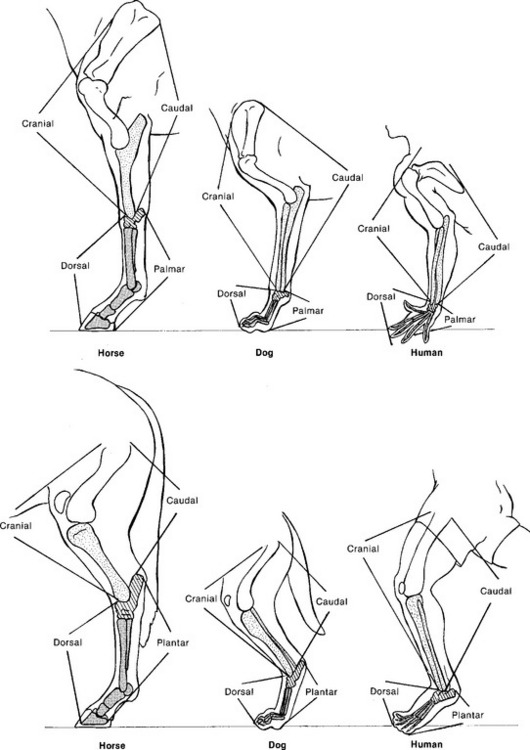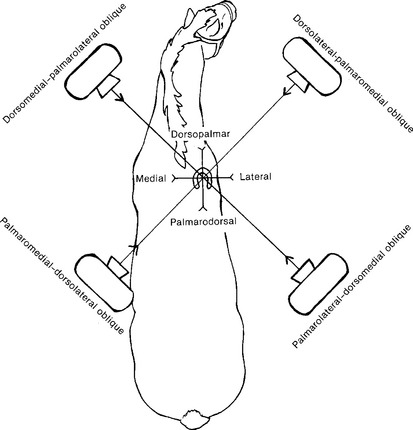chapter 12 General Principles of Positioning
Upon completion of Chapter 12 of this text, the reader should be able to do the following:
Caudal: Describes parts of the head, neck, and trunk positioned toward the tail from any given point. Caudal also describes those aspects of the limbs above the carpal and tarsal joints that face toward the tail.
Cranial: Describes parts of the neck, trunk, and tail positioned toward the head from any given point. Cranial also describes those aspects of the limb above the carpal and tarsal joints that face toward the head.
Distal: Farther away from the point of origin of a structure.
Dorsal: Upper aspect of the head, neck, trunk, and tail. The term also means toward the upper aspect of the animal. Dorsal also describes the aspects of the legs from the carpus and tarsus joints distally that face toward the head.
Lateral: The x-ray beam enters through either the left or right side of the body and emerges on the opposite side, where the cassette is positioned.
Mediolateral: The x-ray beam enters a limb through the medial side and exits on the lateral side. Most lateral radiographs of the limbs are taken in lateromedial projection in large animal radiography.
Palmar: Used instead of caudal when describing the forelimb from the carpal joint distally.
Plantar: Used instead of caudal when describing the hind limb from the tarsal joint distally.
Proximal: Nearer to the point of origin of a structure.
Recumbent: The animal is lying down when the radiograph is made. Most radiographs of the dog and cat are made with the animal in the recumbent position, and this position should be presumed unless otherwise stated on the radiograph.
Rostral: Parts of the head positioned toward the nares from any given point on the head.
Superior and inferior: Used to describe the upper and lower dental arcades, respectively.
Ventral: Lower aspect of the head, neck, trunk, and tail. The term also means toward the lower aspect of the animal.
POSITIONAL TERMINOLOGY
Understanding the correct terminology for the various anatomic views is essential to a radiographer. The directional terms cited in this text are based on the revised terminology system advocated by the American Committee of Veterinary Radiologists and Anatomists. This relatively new system exactly defines the position and direction of the primary x-ray beam. The correct veterinary anatomic directional terms and abbreviations for radiographic projections follow (Figs. 12-1 and 12-2).





